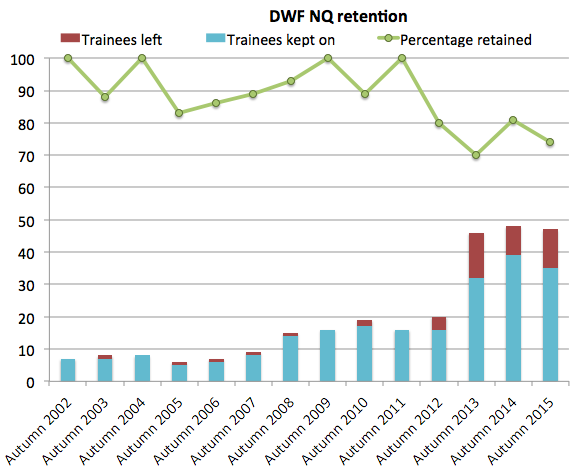Mergers are common part of life in the legal profession. The proposed three-way tie-up between Olswang, CMS and Nabarro is a big one as it goes, but it’s not completely out of the ordinary.
But what happens to a firm’s future joiners when a merger takes place? Firms typically recruit their trainees two years in advance. That means there are at this moment around 20 Olswang future joiners, something in the region of 45 Nabarro trainees-to-be and 110 ready and waiting to take up roles at CMS.
The good news is the 175 future trainees will probably have their training contracts honoured. This is standard practice when law firms merge, though with so many future joiners in the pipeline, it wouldn’t be a surprise if the new CMS/Nabarro/Olswang firm asked some of them to defer for a year.
The greater problem for this group of trainees may come later on, when they reach qualification.
For the first couple of years of its existence, the new firm will probably have significantly more qualifying trainees than it needs – meaning retention rates will almost certainly drop.
The case of DWF
In 2007 just nine trainees qualified at DWF. Six years later, there were 46. The firm’s trainee intake had increased by 411 per cent as a spate of mergers bulked the firm up hugely.
It took on the trainees of firms including Newcastle’s Crutes in January 2012 (25 November 2011), Buller Jeffries of Coventry three months later (2 April 2012) and Scottish firm Biggart Baillie in July (7 June 2012).
DWF even honoured the training contracts of Cobbetts after taking on the bulk of that collapsed firm.
But as the chart below shows, it turned from a firm that regularly retained 100 per cent of its trainees to one that keeps on 70 to 80 per cent.

While retention may have dropped, DWF has actually maintained trainee recruitment numbers in the wake of all its mergers.
The firm’s graduate recruitment partner James Szerdy pointed to DWF’s fledgling status in several key markets as one reason for it being able to support an increase in trainee intake.
He said: “There are certain areas we identify as being ripe for growth so that will support our trainees too. London is still a fairly nascent market for us. We have not been there that long and have been bolting on our services rather than going in as a full service firm but we are building it up and see it is a significant opportunity.”
The ‘CMS Nabbarwang’ merger is a different proposition. There is significant overlap between the three firms in terms of both practice area and location.
If the merger goes through, expect a trimming of the fat immediately afterwards, with partners and associates departing.
That in turn means less requirement for trainees.
Live blog: CMS, Nabarro and Olswang partners to vote on historic three-way merger





























